Evênements
Deux week-end exceptionnels de conférences, de performances, de projections de documentaires, de films de fictions et d'images de synthèse sont organisés dans le cadre du festival @rt Outsiders à l'auditorium Bernard-Pierre Wolff de la Maison Européenne de la Photographie.
Samedi 4 octobre
Dimanche 5 octobre
Visibilité / Lisibilité
de l'art spatial
Art et gravité zéro :
l'expérience des vols paraboliques
Samedi 4 octobre
21:00 - 05:00
Nuit spatiale
Zurban / @rt Outsiders
Samedi 18 octobre
Dimanche 19 octobre
L'Odyssée de l'art spatial
Mardi 4 novembre
19:00
Les coulisses de la création : l'image recomposée
Vendredi 7 novembre
Space love
de Jérôme Duval & Jean-Yves Leloup
Samedi 4 octobre
Dimanche 5 octobre
Visibilité / Lisibilité
de l'art spatiale
Art et gravité zéro :
l'expérience des vols paraboliques
Sous la direction d'Annick Bureaud
Le colloque "Visibilité - Lisibilité de l'art spatial. Art et Gravité Zéro : l'expérience des vols paraboliques", organisée par Annick Bureaud, s'inscrit dans une collaboration entre le Festival international @rt Outsiders et Leonardo/Olats.
Samedi 4 Octobre
09:30 → 09:45
09:45 → 10:00
Accueil
Jean-Luc Soret, directeur artistique du Festival @rt Outsiders
Roger Malina, Modérateur
10:00 → 10:45
Les raisons d'un colloque
Présentation par Annick Bureaud, Leonardo/Olats, Paris
10:45 → 11:15
L'accès à la micropesanteur
Les vols paraboliques
Denis Thierion, irecteur des vols paraboliques, CNES, Toulouse
11:15 → 12:00
Le laboratoire de recherche multidisciplinaire
Un artiste dans l'espace : un but atteignable ?
Nicola Triscott & Rob LaFrenais, Arts Catalyst, Londres
12:00 → 12:30
Flow Motion : Kosmos in Blue
Flow Motion (Anna Piva & Edward George), artistes, Londres
12:30 → 13:00
13:00 → 14:00
Questions...
discussions avec la salle - Modérateur : Edmond Couchot
+ Pause déjeuner
14:30 → 15:00
La perception visuelle du monde vivant
Thierry Pozzo, chercheur, Inserm, Dijon
15:00 → 15:30
De l'expérience vécue à la création :
trajectoires et analogies
Kitsou Dubois, artiste, Paris
15:30 → 16:00
Transpermie, le projet Dédalo
Marcel-Li Antunez Roca, artiste, Barcelone
16:00 → 16:30
16:30 → 16:45
Questions...
discussions avec la salle
+ Pause
16:45 → 17:15
Le nouveau point de vue du monde - Zero G
Takuro Osaka, artiste, Tokyo
17:15 → 17:45
Kaplegraf 0g (drop orbits)
conférence de Vadim Fishkin, artiste, Ljubjana / Moscou
17:45 → 18:15
Que la force soit avec Toi !
Alex Adriaansens, directeur V2, Rotterdam
18:15 → 18:45
18:45 → 19:00
Questions...
discussions avec la salle
Conclusion de la journée : Annick Bureaud
Présentation de la soirée:Jean-Luc Soret
Colloque suivi d'une soirée spéciale "Nuit Blanche" à l'auditorium de la MEP
21:00 → 22:10
Space Love
Performance visuelle et sonore : 70 min. 2003, de Jérôme Duval & Jean-Yves Leloup
22:10 → 00:00
Space movies
Programmation de films d'images de synthèse sélectionnés par l'INAthèque de France, Imagina, Sup Info Com, les e-Magiciens, les Films Action. Par ailleurs, toutes les installations du Festival @rt Outsiders seront ouvertes tout au long de la nuit à la MEP.
Dimanche 05 Octobre
Modératrice : Isabelle Rieusset-Lemarié
14:00 → 15:00
Entre réel et virtuel, repérages
conférence de Jean-Pierre Haigneré, astronaute, ESA, Paris
15:00 → 15:30
Contextualisation de l'art en micro-gravité
conférence de Roger Malina, Leonardo & Laboratoire d'astronomie spatiale, Marseille
15:30 → 16:00
Le cosmise russo-soviétique en gravité zéro
conférence de Mikhail Ryklin, philosophe, Moscou
16:00 → 16:15
16:15 → 16:30
Questions...
discussions avec la salle
+ Pause
16:30 → 17:15
Le projet Otolith
conférence de Kodwo Eshun, Richard Couzins & Anjalika Sagar, artistes, Londres
17:15 → 17:45
"Drift Painting" en micro-gravité
conférence de Frank Pietronigro, artiste, San Francisco
17:45 → 18:15
Propos sur l'histoire des vols paraboliques et le fait d'être malade
conférence de Louise K. Wilson, artiste, Londres
18:15 → 18:45
Les opérations de Vols du Projekt Atol,
l'Agence Spatiale Slovène et
le Makrolab
conférence de Marko Pelhjan, artiste, directeur Projekt Atol, Ljubjana
18:45 → 19:00
Questions...
discussions avec la salle
Colloque suivi d'une performance
20:30 → 21:40
Space Love
Performance visuelle et sonore : 70 min. 2003, de Jérôme Duval & Jean-Yves Leloup
04.10.2003 | 21:00 - 05:00
Nuit spatiale
Zurban / @rt Outsiders
annulé
Samedi 18 et Dimanche 19 octobre 2003
L'Odyssée de l'art spatial
Sous la direction de Jean Luc Soret
Ce colloque a pour objectif de placer l'art spatial dans une perspective historique :
- En analysant les courants et les pratiques artistiques qui ont contribués à son émergence
- En mettant en évidence l'influence de l'Histoire, et notamment de la période post-Guerre Froide, sur son développement.
- En évoquant les liens étroits et indissociables qu'il entretient avec l'histoire du progrès technologique.
Samedi 18 Octobre 2003
14:00 → 15:00
Dans le champ des étoiles
Documentaire (52')en présence de la réalisatrice, Danielle Jaeggi
La photographie astronomique a fasciné scientifiques et artistes dès son apparition au milieu du XIXe siècle. Elle allait leur permettre de capter, d'enregistrer, de matérialiser des phénomènes invisibles jusqu'alors. Qui dit invisible dit voie ouverte à l'imaginaire. Certains astronomes ont ainsi été confortés dans leur croyance à des mondes habités sur la lune, Mars, Vénus. Les réflexions de Victor Hugo sur l'infini, les récits de Jules Verne ou d'H.G. Wells s'inspirent des rêveries scientifiques de l'époque. Les œuvres de Camille Flammarion ont alimenté l'imaginaire de nombreux peintres, poètes et écrivains. La perception d'un au-delà du visible a transformé celui des artistes jusqu'à nos jours.
15:00 → 15:45
Art et astronomie
conférence de Jean-Pierre Luminet, astrophysicien
Histoire des représentations esthétiques du cosmos à travers une sélection très réduite d'œuvres de quatre artistes d'horizons et d'esthétiques très diverses, mais qui ont pour point commun d'avoir puisé leur inspiration dans la contemplation du ciel (visible ou invisible) : Dürer, van Gogh, Salat et Grisey.
15:45 → 16:30
Présentation du projet KEO
conférence de Jean-Marc Philippe, artiste
KEO est un projet aux multiples facettes dont Jean-Marc Philippe - son auteur et concepteur - nous rendra compte en mettant notamment en lumière la dimension historique de cette œuvre tant dans son contenu que dans son principe.
16:30 → 17:15
Le Space Art, héritier du futurisme ?
conférence de Pierre Comte, artiste
avec la participation de Philippe Perrin, astronaute.
Histoire des rapports étroits qui lient le "Futurisme", fondé en 1909 par Filippo Tomaso et le "Space Art" pressenti en 1969 par Frank Malina, pionnier de l'astronautique aux états-Unis, fondateur de la revue Leonardo. Avec la participation exceptionnelle de Philippe Perrin, Astronaute du CNES depuis 1996.
17:15 → 18:00
Le radiotélescope RT-32 : histoire d'une conversion
conférence de Ewen Chardronnet, artiste, France
Histoire de la conversion du radiotélescope RT-32 d'Irbene en Lettonie, instrument du contre-espionnage soviétique pendant la Guerre Froide, aujourd'hui reconverti et dédié à la science fondamentale, à la radioastronomie et aux artistes sonores.
18:00 → 18:45
L'histoire de l'art spatial vu par la revue Leonardo
conférence de Roger Malina, artiste, Usa / France
L'histoire du Space Art vu par la revue Leonardo - Fondée en 1968 par l'artiste et ingénieur Frank Malina (père de Roger Malina), Leonardo est une revue internationale qui offre une plate-forme d'expression et de réflexion aux artistes dans le domaine des arts, sciences et technologies. Le premier article sur le "Space Art" ayant été publié en 1971 par la revue Leonardo, il était légitime de demander à son rédacteur en chef, Roger Malina, de dresser un panorama historique de l'art spatial.
18:45 → 19:30
L'aventure spatiale :
source de nouvelles représentations
conférence de Gérard Azoulay de l'Observatoire de l'Espace du CNES
L'aventure spatiale : source de nouvelles représentations - à partir de ce que nous savons de ces nouveaux modes de représentation, des programmes spatiaux et des gigabits de données qu'ils transmettent en permanence vers la Terre, il est indispensable de se poser la question de la ressaisie possible de ces images par le champ artistique.
19:30 → 19:45
Remise du prix Leonardo / @rt Outsiders
Roger Malina, Annick Bureaud, Henry Chapier et Jean-Luc Soret.
Le Prix Leonardo-@rt Outsiders Nouveau Horizons 2003 doté de 1000 euros sera attribué par un jury à un lauréat choisi parmi les artistes de l'exposition. Par ailleurs, il sera offert à ce lauréat la possibilité de publier un texte dans la revue Leonardo (MIT Press) et de mener une campagne de publicité pour faire connaître son travail.
19:45 → 20:15
Lancement de SpaceartS,
base de données sur l'art spatial
conférence
Arthur Woods et Annick Bureaud
www.spacearts.info
20:15 → 21:50
Out of the present
Film (92') - 1996 de Andreï Ujica
 En mai 1991, les cosmonautes soviétiques de la mission Ozon, Anatoli Artsebarski et Sergeï Krikalev sont envoyés sur la station orbitale MIR. Tandis que le commandant revient sur terre à la date fixée, c'est à dire cinq mois plus tard, Krikalev, contraint par les circonstances politiques, passe près de dix mois à bord... Parti de l'URSS, il revient en Russie... En effet, durant son absence, a eu lieu le putsch d'août 1991 à Moscou dont l'échec a rayé des cartes le nom même d'Union Soviétique et achevé toute une époque historique. L'idée du film est simple, son motif classique : une odyssée !
En mai 1991, les cosmonautes soviétiques de la mission Ozon, Anatoli Artsebarski et Sergeï Krikalev sont envoyés sur la station orbitale MIR. Tandis que le commandant revient sur terre à la date fixée, c'est à dire cinq mois plus tard, Krikalev, contraint par les circonstances politiques, passe près de dix mois à bord... Parti de l'URSS, il revient en Russie... En effet, durant son absence, a eu lieu le putsch d'août 1991 à Moscou dont l'échec a rayé des cartes le nom même d'Union Soviétique et achevé toute une époque historique. L'idée du film est simple, son motif classique : une odyssée !
Dimanche 19 Octobre 2003
14:00 → 19:00
Space movies
Programmation de films d'images de synthèse sélectionnés par l'INAthèque de France, Imagina, Sup Info Com, les e-Magiciens, les Films Action.
19:00 → 19:30
La mission Priviet
Documentaire-fiction (20') - 2003 de Raphael Frydman pour The Eternals / Astropioneers
 Tourné au Kasakstan en janvier 2003, ce sont tous les enjeux de la conquête spatiale russe qui sont abordés à travers l'échec d'un mystérieux lancement de Soyouz habité, la Mission Priviet. Le réalisateur Raphael Frydman a tourné ce document pendant trois semaines à Almati et Baïkenour par 30°, et a cherché à découvrir la vérité sur cette mission : info ou intox de l'Armée Rouge? Ont-ils cachés au monde pendant des années la rencontre du troisième type? Ou bien ont-ils monté de toutes pièces cette mission, pour manipuler les américains en pleine guerre froide ?
Tourné au Kasakstan en janvier 2003, ce sont tous les enjeux de la conquête spatiale russe qui sont abordés à travers l'échec d'un mystérieux lancement de Soyouz habité, la Mission Priviet. Le réalisateur Raphael Frydman a tourné ce document pendant trois semaines à Almati et Baïkenour par 30°, et a cherché à découvrir la vérité sur cette mission : info ou intox de l'Armée Rouge? Ont-ils cachés au monde pendant des années la rencontre du troisième type? Ou bien ont-ils monté de toutes pièces cette mission, pour manipuler les américains en pleine guerre froide ?
18:30 → 20:00
Contre le gravitropisme :
l'art et les joies de la lévitation
d'Eduardo Kac
A voir sur le web (version anglaise)
04.11.2003 | 19:00
Les coulisses de la création : l'image recomposée
Soirée organisée avec le concours de ADOBE
Durant ces trois dernières années, Christophe Luxereau a partagé avec le public de la Maison Européenne de la Photographie, la vision du monde qu'il conçoit pour demain.
Ce jeune artiste talentueux s'impose aujourd'hui sur la scène de l'art contemporain avec des œuvres reconnues pour leur sens aigü de l'esthétique.
Peu de visiteurs cependant, imagine que derrière le talent déployé, la richesse et la poésie de son monde intérieur, se cache une fabuleuse maîtrise des outils de création numérique et des logiciels graphiques. Il fera partager, l'espace d'une soirée, les différentes étapes de son travail et soufflera peut être quelques secrets d'atelier.
Soirée reportée à une date ultérieure
Vendredi 7 Novembre 2003
Space love
18:30 → 19:30
Performance visuelle et sonore
70 min. 2003. de Jérôme Duval, cinéaste & Jean-Yves Leloup, Dj, France
Jérôme Duval, artiste multimédia et cinéaste, et Jean-Yves Leloup, artiste sonore, DJ et journaliste, sont les créateurs du projet "Digital Cinema" : L'opus 2 de "Digital Cinema" intitulé "Space Love" met en parallèle l'aventure spatiale et la quête érotique de l'amour impossible. Ce film dont les images et l'illustration sonore sont joués en live illustre les utopies et déboires de la conquête spatiale de 1960 à nos jours. L'attrait des hommes pour la conquête de l'espace ressemble à s'y méprendre à une parade de séduction, à une quête érotique d'absolu.
http://www.digitalcinema.tm.fr
Cette performance a bénéficié de l'aide à la création multimédia expérimentale de Thécif - Région Ile-de-France, du Dicream et du festival @rt Outsiders.

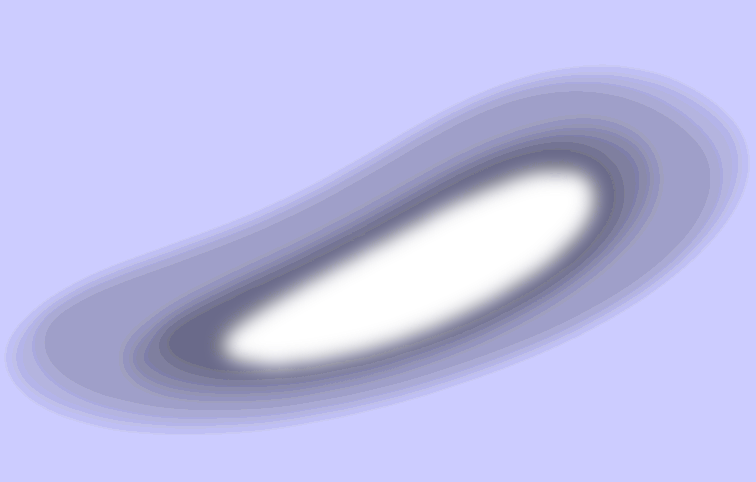
 Telescopage is a video/digital installation that shows the evolution in means of transmission brought on by today's space exploration and the prevalence of interconnections. "Telescopage" also more broadly focuses on the relationship that each individual has with communication tools : telephone, fax, keyboard, screen, etc.
Telescopage is a video/digital installation that shows the evolution in means of transmission brought on by today's space exploration and the prevalence of interconnections. "Telescopage" also more broadly focuses on the relationship that each individual has with communication tools : telephone, fax, keyboard, screen, etc.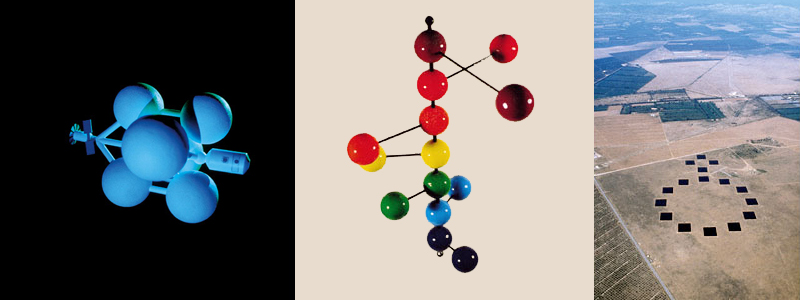
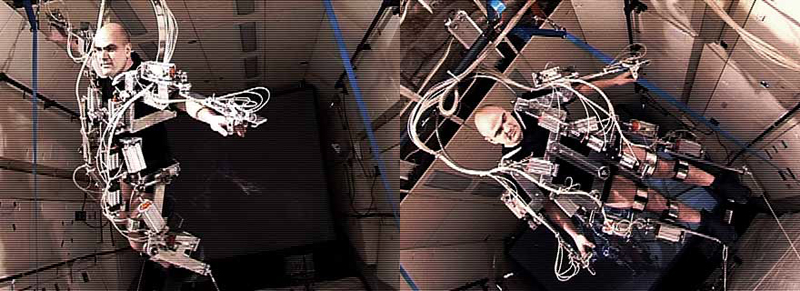
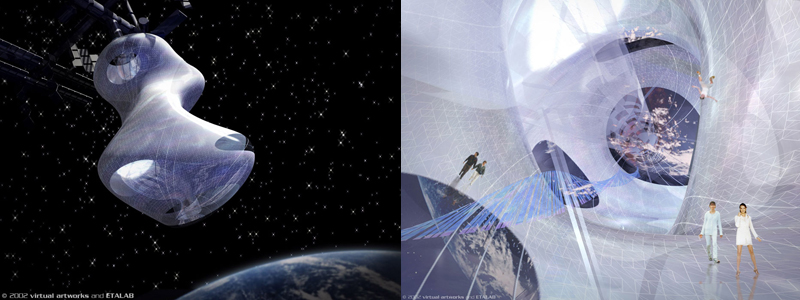


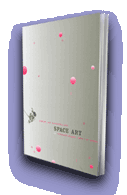
 En mai 1991, les cosmonautes soviétiques de la mission Ozon, Anatoli Artsebarski et Sergeï Krikalev sont envoyés sur la station orbitale MIR. Tandis que le commandant revient sur terre à la date fixée, c'est à dire cinq mois plus tard, Krikalev, contraint par les circonstances politiques, passe près de dix mois à bord... Parti de l'URSS, il revient en Russie... En effet, durant son absence, a eu lieu le putsch d'août 1991 à Moscou dont l'échec a rayé des cartes le nom même d'Union Soviétique et achevé toute une époque historique. L'idée du film est simple, son motif classique : une odyssée !
En mai 1991, les cosmonautes soviétiques de la mission Ozon, Anatoli Artsebarski et Sergeï Krikalev sont envoyés sur la station orbitale MIR. Tandis que le commandant revient sur terre à la date fixée, c'est à dire cinq mois plus tard, Krikalev, contraint par les circonstances politiques, passe près de dix mois à bord... Parti de l'URSS, il revient en Russie... En effet, durant son absence, a eu lieu le putsch d'août 1991 à Moscou dont l'échec a rayé des cartes le nom même d'Union Soviétique et achevé toute une époque historique. L'idée du film est simple, son motif classique : une odyssée ! Tourné au Kasakstan en janvier 2003, ce sont tous les enjeux de la conquête spatiale russe qui sont abordés à travers l'échec d'un mystérieux lancement de Soyouz habité, la Mission Priviet. Le réalisateur Raphael Frydman a tourné ce document pendant trois semaines à Almati et Baïkenour par 30°, et a cherché à découvrir la vérité sur cette mission : info ou intox de l'Armée Rouge? Ont-ils cachés au monde pendant des années la rencontre du troisième type? Ou bien ont-ils monté de toutes pièces cette mission, pour manipuler les américains en pleine guerre froide ?
Tourné au Kasakstan en janvier 2003, ce sont tous les enjeux de la conquête spatiale russe qui sont abordés à travers l'échec d'un mystérieux lancement de Soyouz habité, la Mission Priviet. Le réalisateur Raphael Frydman a tourné ce document pendant trois semaines à Almati et Baïkenour par 30°, et a cherché à découvrir la vérité sur cette mission : info ou intox de l'Armée Rouge? Ont-ils cachés au monde pendant des années la rencontre du troisième type? Ou bien ont-ils monté de toutes pièces cette mission, pour manipuler les américains en pleine guerre froide ?